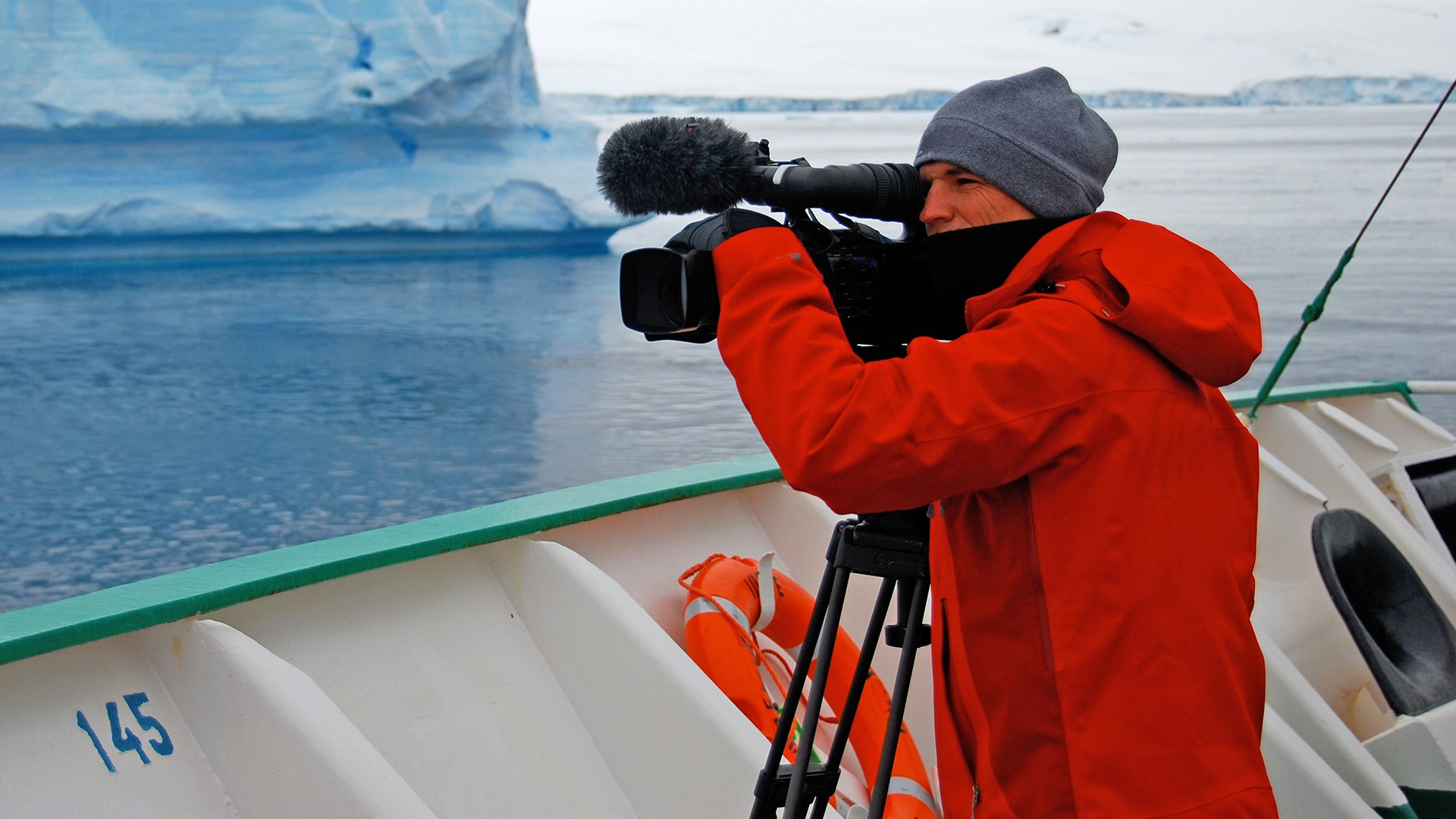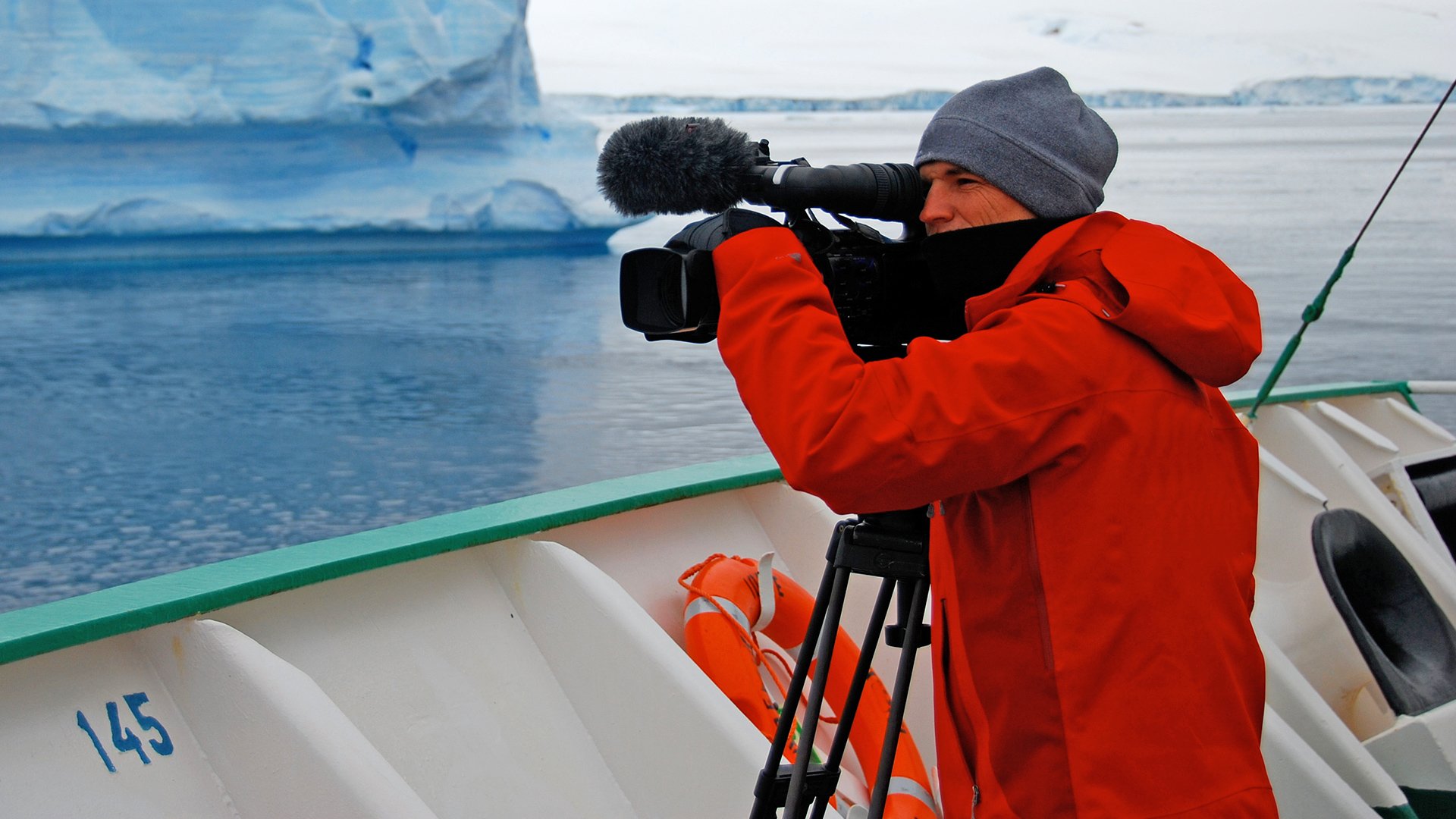
Replay: What can we believe these days? The internet has vastly increased the amount of information available to everyone, but not only is a lot of that information false, but we no longer trust the systems that distinguish truth from falsehood.

Image: Shutterstock - fivepointsix
Many look to documentary filmmakers to reveal the world as it really is but, increasingly and perhaps rightly, people question the veracity of what they see on their screens. Documentary film was originally defined as ‘the creative interpretation of reality’. Today even that simple phrase seems problematic.
Every so often a particular TV documentary gets accused of distorting the facts or outright lying. Wildlife documentaries have been the latest suspects of faking accusations – with some justification. A cameraman who had worked on some of the early Attenborough programmes once told me what surprised him most was just how many animals they took with them when they travelled.
The techniques criticised will be of no surprise to any of us in the business – you just can’t make that sort of programme without an element of sleight-of-hand. When you have a shot of a bird swooping down onto a lake, then a cut to underwater shot of the same bird picking up a fish, we know that scene has been set up. We also know that when we see deep inside an animal burrow we are looking at a studio recreation, and we take for granted nearly all those jungle sounds will be post-synced.
The tricks we take for granted
Of course it’s not just wildlife programmes. Documentary film makers have always taken liberties with the truth, from Flaherty‘s 1922 Nanook of The North, where the filmmaker got the Inuit to hunt walrus with a spear rather the gun he actually used, to the BBC series on the Queen which was severely criticised for implying she had walked out of a photo session ‘in a huff’, by cutting two shots that had actually been filmed on different days.
You could say there is no filmmaking without deception – we are simulating not recording the world. Just the juxtaposition of two shots makes a statement. Reaction shots are rarely filmed simultaneously but, say, the cut to someone laughing or sneering can have an big effect on how a particular situation is perceived. Is this manipulation, or is it just part of the process of filmmaking?
What is trickery to an audience is often just the standard strategies of TV filmmaking. There was a minor scandal a few years ago when it was revealed that in single camera news interviews, the questions are usually shot afterwards along with the interviewer’s ‘noddies’. We know it takes a lot of techniques to make a film appear seamless, but the audience doesn’t. We get the subject to walk through the door again, or re-enact a phone call or conversation. Sometimes we do take all these tricks and tactics for granted, and perhaps we should question whether we are making the viewing experience easier, or actually manipulating the evidence.
But styles change; increasingly we see hard jump cuts in interviews. Is this more honest than hiding the join behind a cutaway, or is it an irritation? Let us not forget the interview is, in itself, a contrivance, and it takes a lot of artifice to make it appear natural. And there are learned techniques on both sides – increasingly interviewees know how to ‘do interviews’; they know to incorporate the question in the answer so their reply can stand alone, to keep their answers short, to not look at the camera and, when it comes to vox pops, always have a sound-bite ready.
Swatting the fly on the wall
People also often wonder whether the presence of the documentary camera has an effect on the people it is recording. Well, of course it does but, in my experience, less than many might imagine. Subjects adjust to the presence of the camera remarkably quickly, particularly with small crews, and may even forget it’s even there. But it does have an influence, just as the filmmaker or any other person will have an effect on the situation, with or without a camera.
In my own documentary work, I never set out to be invisible and often subjects acknowledge my presence or even ask me questions– I’m another human being, and I’m not attempting to be the mythical ‘fly on the wall’.
Every documentary is a construction
Audiences are ready to pick up on obvious inconsistencies – that part was shot on a different day/different place to what it was supposed to be, that phone call was faked, that scene must have been rehearsed, just as there are viewers ready to count just how many bullets the cowboy has fired out of his six-shooter, while overlooking the fact the whole Western genre is based on a myth.
What seems to pass by almost all viewers is that, in a sense, every documentary is a lie - it is a construction, and constructing a documentary is effectively writing a story. Just choosing to make a film about a person or an institution is the start of a process of turning day-to-day life into a story. Real life doesn’t come in the form of stories, a lot of it is random, dull and inconsequential. Stories are inventions; without them we might as well be watching the output of a security camera.
Filmmakers need characters, protagonists and antagonists, individuals with goals to achieve that are frustrated or challenged in one way or another. We need to see them in conflict, we need to offer a resolution. We might shoot 100 hours or more for an hour programme; and subjects sometimes complain ‘our life isn’t really like that - most of the time not much happens and it’s really boring’. Yes, that’s probably true, and this is not just a case of just throwing away the 99 hours when nothing much happened, it’s choosing the 60 minutes that can be shaped into a hour that tells a story.
We are storytelling creatures
The process is, perhaps, not quite as nefarious as it seems; we are storytelling creatures, and it’s something we do all the time. When we ask a friend something like ‘how did that date go last night?’, the questioner doesn’t really want a list of events and actions, they want a story - desires and expectations, conflict, and a sense of ‘what happens next’.
One of the problems with how documentaries are perceived is that the film medium is very seductive. There seems to be a general awareness that an article in a newspaper or magazine is authored, and thus that journalist’s particular perception, but with a filmed report, people seem to believe they have seen the situation for themselves, and thus expect a neutrality from a TV programme that they don’t expect from a newspaper.
So what should we do?
How do you maintain some sense of integrity, how do you guard yourself against accusations of distortion or bias? That is a very difficult question to answer, but it applies to every non-fiction account, whether it is an essay, a newspaper story or a documentary. It is easier to spot manipulation and outright lies than it is to find paradigms of authenticity. The judgements you have to make are complex, subtle and subjective.
The best you can do is to present people as you see them, as honestly as you can, and avoid things like using out-of-character remarks or out-of-context juxtapositions which would present the situation unfairly, but that ‘fairness’ is still a subjective judgement. I also believe it is healthy for the filmmaker to acknowledged his or her presence and to make it implicit that this is one view of a situation, not an objective window on the world.
I’d be very interested in your response to these issues. In a follow-up piece I’d like to continue the discussion with examples from my own experience as a cameraman and filmmaker.
Tags: Production


Comments